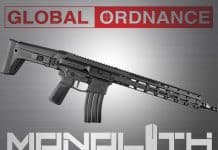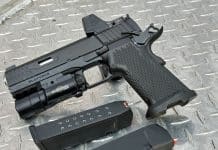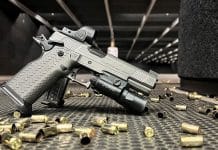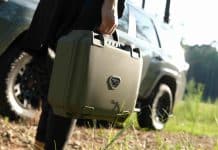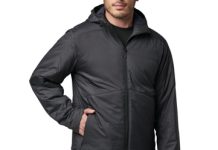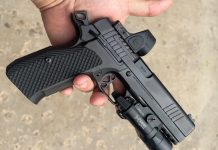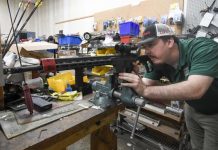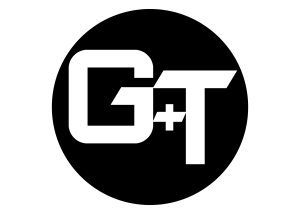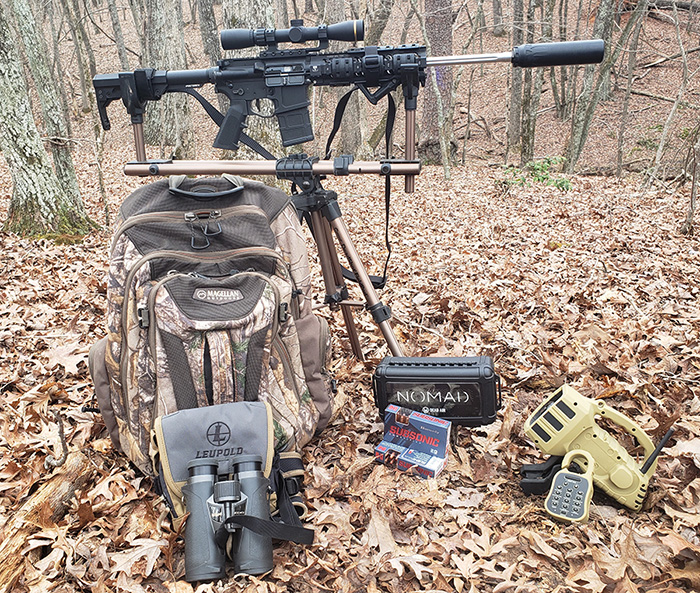
A while ago, I wrote about a dream build in .300 Blackout (A Wish List for a Dream 300 Blackout Build). I was surprised at how quickly I got the parts and very pleased with my choices. A lot of what I got was on the higher end, so I expected great results after spending over $1000. I was not disappointed. I built this rifle to go along with a .30 Cal Nomad Dead Air suppressor. The combination was meant to be used in the field, as well as on the range, and by my 10-year-old daughter (who’s sensitive to recoil). While I haven’t been successful at taking game yet, I’m certain it is up to the task. I’d like to go over the parts and what the results were.
The Upper
The upper started as a 5.56 with a bad barrel that I decided to rebuild. I kept the receiver along with the quad rail and the charging handle. The rest I replaced. The most important component for any upper is the barrel. After all, it is where the bullet travels and what gives accuracy. After some troubles with my original decision and parts being available when I had the funds, I ended up buying a Wilson Combat Match 16″ barrel with a pistol length gas system. I knew this gun would be run mainly with a suppressor, so I wanted the pistol length gas system. I also needed a 16″ barrel, since I didn’t have an SBR lower or pistol lower. Wilson Combat is known for quality parts, and the reviews spoke highly. Plus, the barrel fell within my price range (about $250), so I made the purchase. I was not disappointed. The barrel came in well packaged and looking like it was ready to go. No blemishes or machining marks were seen, and the finish was exactly as advertised. The fit was perfect, and all range days experiences were fantastic (I will go over this later in this article).


The one negative I can say is there were some break-in steps needed for this barrel. The suppressor fouled the barrel quickly, and after 10 to 20 rounds, my shot groups opened up tremendously. I learned that cleaning the barrel brought the group back to a tight pattern, so I began bringing a bore snake to the range with me. This gun is meant to be a field gun, meaning one or two shots will be the norm. I put a higher round count through the gun without cleaning after sighting it in and breaking in the barrel. The grouping opens up but still stays within a 4″ group. Those who’ve run suppressors know this is common due to excessive blowback. However, keeping it within the vital zone of big game works for me. Since my needs aren’t for running hard and fast, I’m happy with a lower round count of higher precision.
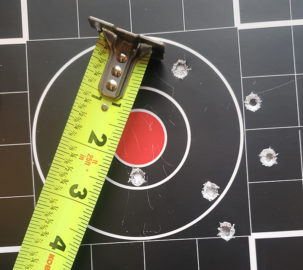
I am a big supporter of gas piston systems for the AR. Eugene Stoner was too. His next prototype of the AR platform, the AR 16, was piston-driven, leading one to believe he saw the benefits of a rod actuating the rifle versus direct gases. I worked for many years at Adams Arms and knew their product to be well designed and made. They have a pistol-length gas system explicitly designed for the .300 Blackout with a low-mass bolt carrier and an adjustable gas block, so I made the order. The original upper build ran an earlier piston kit they designed with a receiver height Picatinny gas block. This aids in the installation. However, this new system has a low-profile gas block to fit under a quad rail, which meant the installation is a bit trickier than the original design. After some use of feeler gauges and patience, the system was installed and runs flawlessly. One other negative I would point out with this build is that the adjustable gas plug is difficult to get with a screwdriver under the quad rail. Difficult does not mean impossible. It means unpolite words were uttered during my first range session, as I had to feel around with a flat head screwdriver adjusting the gas pressure to match the ammo. Still a solid design, and perhaps if I were using a different style fore-end, I wouldn’t have struggled as much.

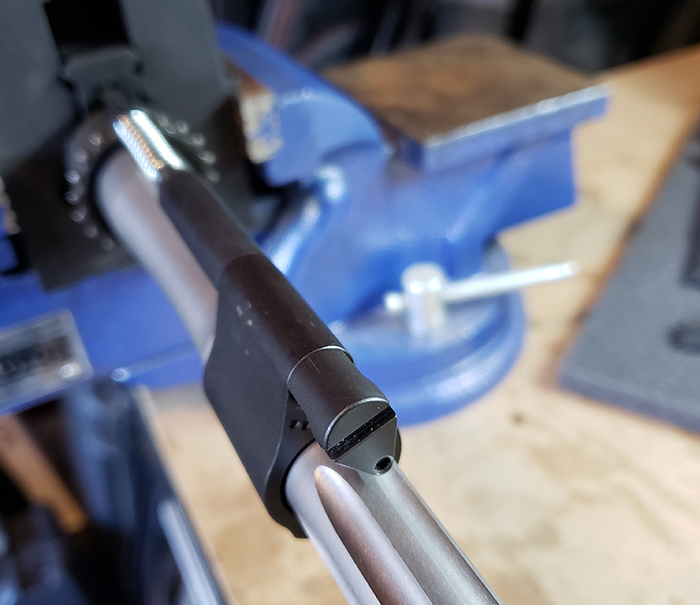
I have shot over a hundred rounds through this gun now and initially did run into a few cycling issues. I ran the BCG dry at first to fully test the effectiveness of the system. Once I added a light coat of oil, the gun began to run flawlessly. I believe a bit of break-in was all that was needed. A suppressor adds a lot of blowback; a piston system dramatically reduces this issue. So much so that even with a dirty gun, the rifle’s action continued to work without issue.
I bought a Leupold Freedom 2-7×33 scope for this rifle, and this was my first foray into the Leupold family. The Freedom line is their cost-friendly offering in the market, and it is a great buy for the price. I have had the opportunity to test Leupold scopes on other rifles over the years and have always felt they were high quality but a bit pricey for my budget. So, a chance to test this line and add a Leupold to my collection was an opportunity I jumped at. The clarity of this glass is exceptional, and low light transmission is great. It is a Leupold through and through and everything you would expect. The only negative I would offer is the scope adjustment knobs do not have an audible click when turned, and the tactile click is barely felt. This made adjustments a bit more difficult since it is easy to over-adjust without realizing it. Once set, the gun has been riding in a truck, on a 4-wheeler gun rack, and carried into the woods without losing a bit of its zero. I have a better appreciation for the Leupold line and will look at them more in the future.
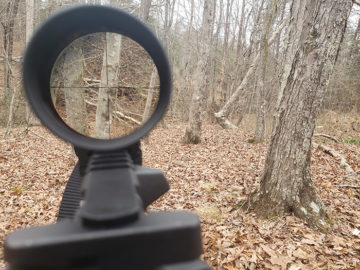
I also purchased a QD comp for the Nomad suppressor I own, with the plan of getting a QD collar from Nomad to go along with it. Since that time, I have not been able to get the collar and have been using the can’s direct threads for the suppressor. So far, no issues have arisen, and I use the same setup for my Savage .308 bolt action. I think I’ll probably keep this as is and just set the comp aside for a future build or sell it.
The Lower
The lower was a complete build, so I had more to purchase for it. I got a stock lower parts kit for takedown pins, springs, trigger pins, etc. I did not upgrade these parts, so nothing really to report on them. The first custom piece was the safety. Years ago, I got a Battle Arms Development 45-degree ambi-safety with one side being a shorter lever than the other. I had not used this safety for any other build, so I decided to put it on this rifle. The selector went in easily, worked great, and is just flat out cool. A shorter throw means quicker selection from safe to fire, and the billet parts are well made. Not much more to say other than it is fun, cool, and a surprise to everyone that tries it.
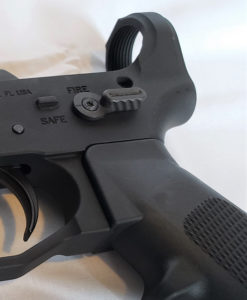
The trigger, much like the barrel, is the most important component of the lower. Trigger control is the key component to accuracy for either a long or short gun and having a quality trigger allows you to index and activate consistently and easily. I have always loved Geissele’s flat bow triggers. They feel good to me. Since the fit and feel is what makes a trigger better from one person to another, my main reason for choosing it. I went with the Super Dynamic 3 Gun Trigger SD3G. The description called the trigger “a ball bearing on a piece of glass with an ultra-short reset and no creep.” Boy, did they get that right. I love this trigger. When I opened the package and read the instructions, it mentioned that there could be an issue of bump firing. With a 3.5 lb trigger, I was confused about how that could be. Once I installed it and put an upper on the lower, I realized what they meant. The reset is so short that the twitch of a finger could cause it to make a follow-up shot fast enough to impress Jerry Miculek himself. For those in fear of this, Geissele sends a heavier trigger spring along with the package if you run into this issue. I left the lighter spring on mine. My rifle build isn’t meant for run and gun per-say, so I wanted that lighter pull with a short break. After all, in a blind or tree stand, I’ll usually have time before my shot to properly squeeze, but if buck fever kicks in, I’ll have that quick follow-up. Perfect for my needs, I have nothing negative to say about this trigger. Unbelievably smooth and easy to shoot. It is awesome, and I highly recommend it.
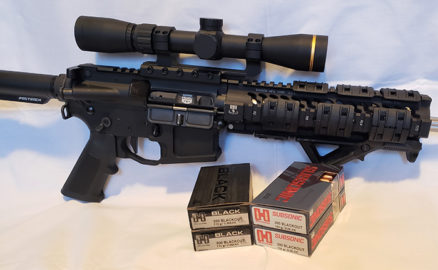
For the stock, I went with the CMMG Ripstock. I had a chance to play with one on someone else’s rifle and was impressed. It is quick to engage between collapsed and fully extended and comes with a set screw to fix the location of the full extension. Light, quick to engage, and solidly made of aluminum, gave me a rifle both me and my daughter can use. One that wouldn’t wear me out carrying it through the woods and minimum stock wiggle when shouldered.
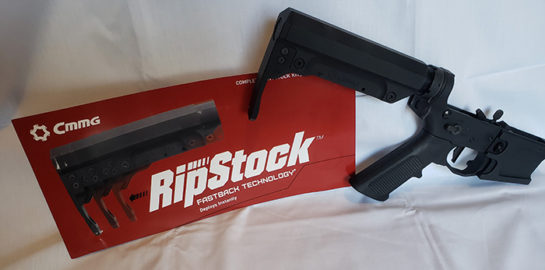
All in all, I highly recommend it. With the upper and lower together, I did notice an issue of magazine preference. I didn’t spend much time trying to figure out the why and where the tolerance issue may have lied since it feeds well from my favorite, Magpul magazines. This is a specific caliber build, so I bought a 20 round Magpul mag that I labeled on the bottom with a silver Sharpie marker for .300 BLK. This gives me a dedicated mag for this caliber and rifle. This also helps eliminate any mistakes with the wrong ammo going into this gun. The standard GI mag, along with other polymer mags, did not want to cycle properly.
Accuracy and in the Field
Accuracy is key to any firearm. It may look and feel good, but it doesn’t do its job if it doesn’t hit the mark. As previously stated, the trigger was phenomenal and, paired with the barrel; I was more than pleased with the results. About 100 plus rounds have been sent downrange at this stage, and the barrel has been broken in, with the scope zeroed. Ammo is hard to come by in any caliber right now and even more so if it isn’t 9mm, 5.56/.223, or .22 LR. So, I’ve limited my range time for now and am limited in the variety of ammo I can shoot. The gun is sighted in with Hornady Subsonic 190 grain SUB-X rounds. I do have some Hornady Black 110 grain V-Max as well. However, I prefer the Subsonic since they are quieter with the suppressor. There was a learning curve involved with the suppressor, so some rounds were wasted as I learned just how quickly the barrel fouled to lose accuracy. However, after realizing what was going on and that a simple pass of a bore snake solved the problem, I was able to get the rifle dialed in with less than a box of ammo.
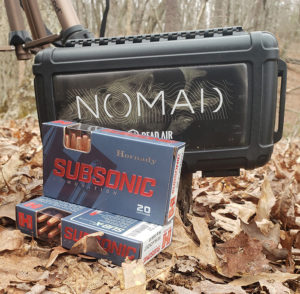
I haven’t spent any more time past zeroing in to see just how tight a group I can get if I take my time. Frankly, I don’t want to waste the ammo right now. Once I was confident with the scope’s zero, I took it to the woods, looking for coyotes. I’m fairly new to coyote hunting, so, through no fault of the gun, I haven’t shot one yet to tell you how well the round works, but accuracy isn’t my concern. Once zeroed, I shot three groups of 3 or 4 rounds to see consistency. The largest group at 100 yards was 2 ½”, and the smallest was 1 1/8″, giving me an average of 1 2/3″. Pretty darn good out of a new rifle and without really trying. With some time and work, I can get that average down to less than an inch, but I want more ammo before trying. The 110 grains that I did put through the gun seemed to group just as well, but I will be honest, once I got the Subsonics, I stopped shooting the supersonic rounds, just had more fun with the subs.

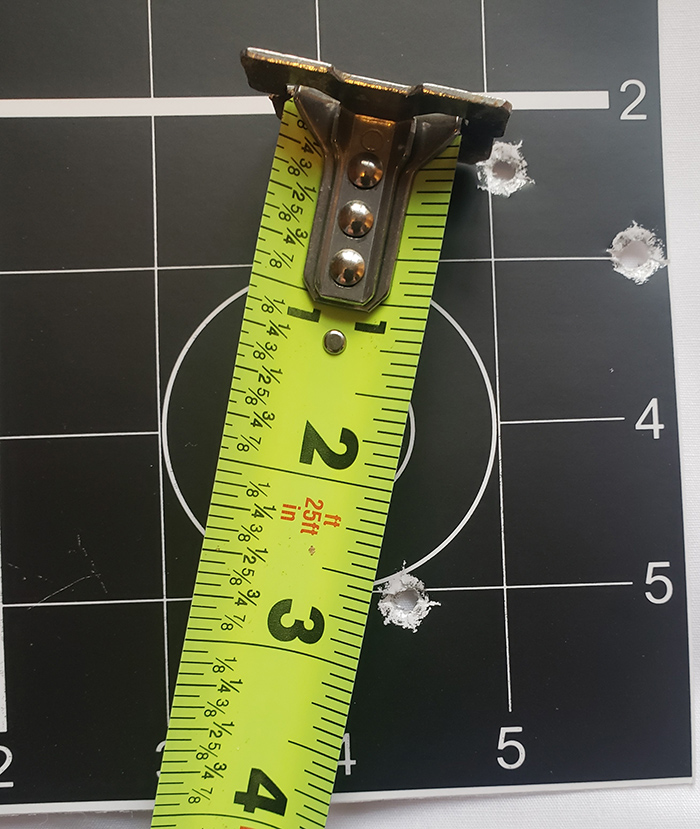
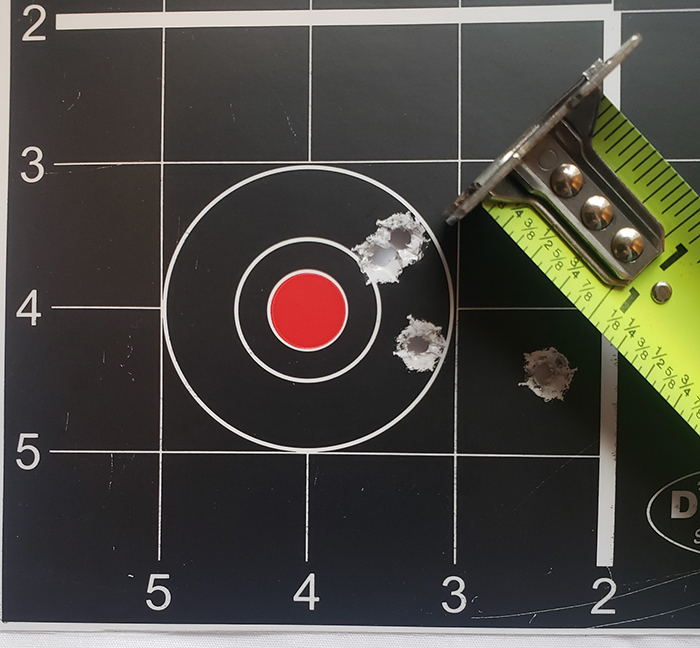
Currently, I carry the rifle using an old USMC-issued 3 point sling a Marine buddy of mine gave me years ago. I don’t have the rifle set up yet with QD sling attachments or swivel studs for a more secure sling option that will come later. This means that the sling is now attached using Velcro straps and can slip from time to time. This can make carrying the rifle up a ladder to get into the stand a challenge. That said, the weight and size, even with the suppressor attached, is a breeze. I carry a full pack into the woods with me and tend to walk half a mile up and down the North Carolina foothills to get to my stands. So, weight and maneuverability is a factor. This rifle was no heavier to me than any other deer rifle I may carry, and maneuverability in the tight confines of a stand was a non-issue. I couldn’t be happier with the results of this build.
The last desire I wanted to achieve out this rifle was something soft enough for my tall, skinny 10-year-old daughter to shoot. Her length of pull almost matches mine, and to look at her, you’d think she’d be accustomed to shooting full-size long guns. She is still a young, skinny little girl, and recoil is something we are having a hard time working on. She didn’t want to even shoot the gun at first, but with a bit of coaxing, she finally got behind the trigger. She did feel the recoil, but after calming her down and building her spirit up, we established that with the subsonic rounds, she was completely capable of handling the gun without issue. As summer comes and we get back out to the range more, I hope to get her some longer trigger time, making this a viable deer rifle for her in the near future. Any of you who has a daughter knows these things take time, but the build itself achieved the desired goal. She can handle it.
Conclusion

This is a custom build, so I don’t expect to hear about clones of this gun showing up at local gun stores. The review was meant to let you know first that builds can still happen and second what a little research and faith in products can produce. All these parts came from bigger names in the industry and show why they have their reputations in the industry. Maybe you wonder if Wilson Combat is worth the money or if Geissle still has the quality they had in the past. My answer is yes. They do. In a market that is flooded yearly with new companies, the old tried and true still make the best parts. AR’s in general, are an easy gun to build yourself with little gunsmithing knowledge, part of what makes them so popular. So, with some research and money, you can build that rifle you have always wanted and achieve a goal that a production rifle doesn’t offer. Everything I used turned out great, and I’d highly recommend them. Go online and look at companies like Brownells and Midway. You, too, can build your dream rifle.
Want more posts like this one? Subscribe to Guns & Tactics to receive email updates and special offers direct to your inbox!
Social Links:
– The views and opinions expressed on this web site are solely those of the original authors and contributors. These views and opinions do not necessarily represent those of Guns & Tactics, the administrative staff, and/or any/all contributors to this site.
– Affiliate Disclaimer: Guns and Tactics is reader/viewer supported. This post may contain affiliate links and we may earn a small commission when you click on the links at no additional cost to you. As an Amazon Affiliate I earn from qualifying purchases.



